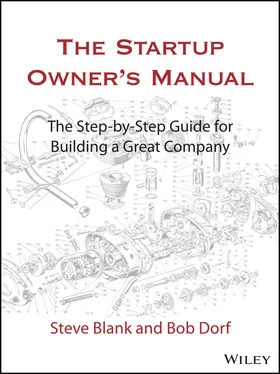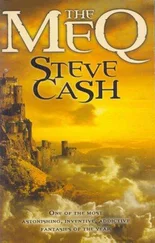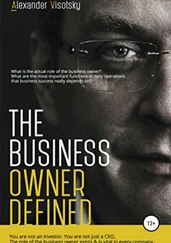If the company is venture-backed, management and investors must agree on a set of metrics that truly matter and work toward a report or “dashboard” that essentially replaces the P&L, cash flow, and balance sheet as centerpieces of early board meetings.
Startup metrics track the results of pass/fail tests and the iterations they lead to:
Have the customer problem and product features been validated?
Does the minimum feature set resonate with customers?
Who in fact is the customer, and have initial customer-related hypotheses on the likes of value proposition, customer segments, and channels been validated through face-to-face customer interaction?
Customer-validation questions might include: average order size, customer lifetime value, average time to first order, rate of sales pipeline growth, improvement in close rate, and revenue per salesperson.
In addition to the startup metrics above, the relatively few financial metrics that a startup board should be tracking are cash-burn rate, number of months’ worth of cash left, short-term hiring plans, and amount of time until the company reaches cash-flow break-even.
Make sure decisions are fact-based, not faith-based.
Rule No. 9:
Fast Decision-Making, Cycle Time, Speed and Tempo
Speed matters at startups where the only absolute certainty is that the bank balance declines every day. While Rule No. 4 addresses iterations and pivots, it doesn’t specify how long they should take. Unequivocally, the faster the better, since the faster these “learn, build, pivot” or “iterate, build” cycles happen, the greater the odds of finding a scalable business model with the cash on hand. If cycles happen too slowly, the startup runs out of cash and dies. The biggest impediment to cycle time is psychological: it requires the admission of being wrong or even of suffering a short-term tactical defeat.
While pivots and iterations are about speed outside the building, speed also matters inside the company. Most startup decisions are made in the face of uncertainty. There’s seldom a clear-cut, perfect solution to any engineering, customer or competitor problem, and founders shouldn’t agonize over trying to find one. This doesn’t mean gambling with the company’s fortunes on a whim. It means adopting plans with an acceptable degree of risk and doing so quickly. (Make sure these decisions are fact-based, not faith-based.) In general, the company that consistently makes and implements decisions rapidly gains a tremendous, often-decisive competitive advantage.
…startups should make reversible decisions before anyone leaves the CEO’s office.
Startup decisions have two states: reversible and irreversible . A reversible decision could be adding or dropping a product feature or a new algorithm in the code or targeting a specific set of customers. If the decision proves a bad one, it can be unwound in a reasonable period of time. An irreversible decision such as firing an employee, launching a product, or signing a long lease on expensive office space is usually difficult or impossible to reverse.
Startups should as policy, make reversible decisions before anyone leaves the CEO’s office or before a meeting ends. Perfect decision-making is both unimportant and impossible, and what matters more is forward momentum and a tight, fact-based feedback loop to quickly recognize and reverse bad decisions. By the time a big company gets the committee to get the subcommittee to pick a meeting date, most startups have made 20 decisions, reversed five, and implemented the other 15.
Learning to make decisions quickly is just part of the equation. Agile startups have mastered another trick: tempo—the ability to make quick decisions consistently and at all levels in the company. Speed and tempo are integral parts of startup DNA, and a great startup’s tempo is often 10 times that of a large company.
Rule No. 10:
A startup without driven, passionate people is dead the day it opens its doors. “Startup people” are different. They think different. In contrast, most people are great at execution. They work to live, do their jobs well, and enjoy their family, their lives, their hobbies and often even enjoy mowing the lawn. They’re terrific at executing fixed tasks, and it’s a wonderful life for almost everyone.
The people leading almost every successful startup in history are just different. They’re a very tiny percentage of the world population, and their brains are wired for chaos, uncertainty, and blinding speed. They’re irrationally focused on customer needs and delivering great products. Their job is their life. It’s not 9-to-5, it’s 24/7. These are the people who found high-growth, highly-successful scalable startups.
Startups demand execs who are comfortable with uncertainty, chaos and change.
Rule No. 11:
Startup Job Titles Are Very Different from a Large Company’s
In an existing company, job titles reflect the way tasks are organized to execute a known business model. For example, the “Sales” title in an existing company means there’s a sales team repeatedly selling a known product to a well-understood group of customers, using a standard corporate presentation with an existing price list and standard terms, conditions and contract. The “Sales” title in an existing company is all about execution around a series of knowns.
Compared with big companies, startups need executives whose skills are 180 degrees different. Startups demand execs who are comfortable with uncertainty, chaos and change —with presentations and offers changing daily, with the product changing often, with probing and gaining insights from failure rather than high-fiving a success. In short, they need the rare breed:
open to learning and discovery—highly curious, inquisitive, and creative
eager to search for a repeatable and scalable business model
agile enough to deal with daily change and operating “without a map”
readily able to wear multiple hats, often on the same day
comfortable celebrating failure when it leads to learning and iteration
We suggest replacing traditional execution-oriented sales, marketing and business development titles with a single title: the Customer Development team. At first, this “team” will consist of the company’s founder(s), who talks with customers to gain enough insights to develop the minimum viable product. Later, as the startup moves into customer validation, the team may grow to include a dedicated “sales closer” responsible for the logistics of getting early orders signed. The closer shouldn’t be confused with a traditional sales VP. To succeed in this process, the team must have:
the ability to listen to customer objections and understand whether they are issues about the product, the presentation, the pricing or something else (or the wrong type of customer)
experience in talking to and moving between customers and engineers
confidence amid a state of constant change, often operating “without a map”
the ability to walk in their customers’ shoes, understanding how they work and the problems they face
Some would say this checklist isn’t bad for identifying great entrepreneurs.
Rule No. 12:
Preserve All Cash Until Needed. Then Spend.
The goal of Customer Development is not to avoid spending money but to preserve cash while searching for the repeatable and scalable business model. Once found, then spend like there’s no tomorrow . This paragraph is worth deconstructing:
Preserve cash : When a startup has unlimited cash (Internet bubbles, frothy venture climate), it can iterate on its mistakes by burning more dollars. When money is tight, without dollars to redo mistakes, it’s crucial to minimize waste. The Customer Development process preserves cash by not hiring any sales and marketing staff until the founders turn hypotheses into facts and discover a viable product/market fit.
Читать дальше











